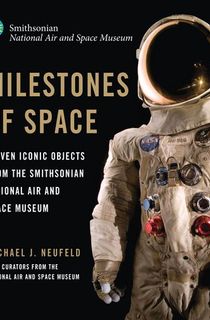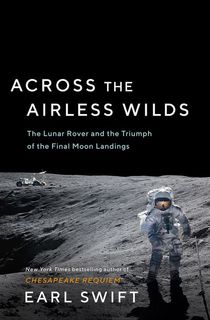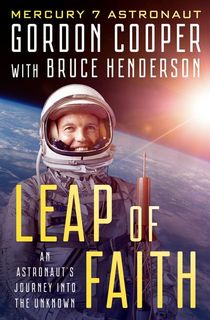When Neil Armstrong became the first man on the moon, he uttered a powerful declaration that perfectly encapsulated the remarkable moment in space exploration history: “That’s one small step for man, one giant leap for mankind.”
Many individuals learn about this historic moment and assume that Neil Armstrong must have also been the first man in space, or if not the first man, then surely the first American to travel amongst the stars. But in actuality, it was a group of seven astronauts who made it conceivable for other astronauts, like Neil Armstrong, to dream that they could experience space travel one day.
The Space Race
Concerned with the Soviet Union’s rapid technological advancement demonstrated by their success in launching Sputnik 1 in 1957 (the first artificial satellite) and Sputnik 2 within the same year (the first spacecraft sent into orbit carrying a dog named Laika), America began competing to prove that the nation could hold its own against the powerful adversary, in what would be known as the Space Race during the Cold War.
This spurred President Dwight D. Eisenhower to establish a civilian space program called the National Aeronautics and Space Administration (NASA) in 1958, which would absorb what had previously been the National Advisory Committee for Aeronautics (NACA). Their lofty objective was to be the first to successfully place a human in orbit, research space travel’s effects and bring the astronaut safely back alive. This endeavor would be called Project Mercury.
Now that their main goal had been decided, next on the Space Task Group’s agenda was deciding who would be allowed to become America’s first astronauts—a group that would eventually be lauded as the Mercury Seven.
A Grueling Selection Process
After receiving permission from President Dwight D. Eisenhower, NASA decided on the specific criteria that would be required of America’s first astronauts. They were searching for these qualifications: a military pilot who was less than 40 years old and less than 5 feet 11 inches tall, in excellent physical condition, with a bachelor’s degree or equivalent, who graduated from test pilot school, and who had a minimum of 1,500 hours of flying time. Although not explicitly stated, this also meant that only white men would qualify, as women weren’t allowed to become pilots in the U.S. armed forces, and racial discrimination placed pilots of color at a major disadvantage.
The records of pilot school graduates were pulled from the Air Force, Navy, Marine Corps and Army and resulted in 508 potential contenders, which were then whittled down to 110 qualified candidates and finally split into three groups of around 35 men each. The first two groups were given briefings on the confidential Project Mercury and told what would be asked of them if they were to participate. Out of the 69 men, 53 agreed to further evaluation, which prompted NASA to forgo calling in the third round of candidates.
After a medical screening, 32 underwent further medical evaluations at the Lovelace Foundation for Medical Education and Research in Albuquerque, New Mexico, including a multitude of intense endurance tests. Although women were currently barred from participating, in the early 1960s, a group coined the Mercury 13 would prove that women were just as capable of passing the stressful, invasive tests that tested their physical and mental resilience, which included spending hours in a sensory deprivation tank.
Unfortunately, despite passing each test and at times outperforming their male counterparts, the Mercury 13 were not given the opportunity to continue within the program, as it was eventually shut down after much resistance from forces who believed a woman’s place shouldn’t be in space.
Not having to face the same impediments, 31 of the 32 male candidates who passed their initial testing advanced to the Aero Medical Laboratory (AML) at Wright-Patterson Air Force Base in Dayton, Ohio, where, from February 15 through March 28, they underwent more testing, which included acceleration tests, vibration tests, heat tests, and loud noise tests, and were required to be placed in centrifuges and altitude chambers to assess their responses.
Psychological and intellectual tests were also mandatory. By mid-April, from a list of 18 finalists, a panel confirmed the seven men who would have the honor of being America’s first group of astronauts.
Who Were the Lucky Few?
On April 9, 1959, at NASA’s first headquarters in the ballroom of the Dolley Madison House on Lafayette Square in Washington, D.C., the astronauts were introduced to the public for the first time by NASA Administrator T. Keith Glennan in alphabetical order: “Malcolm S. Carpenter, Leroy G. Cooper, John H. Glenn, Virgil I. Grissom, Walter M. Schirra, Alan B. Shepard, and Donald K. Slayton…the nation’s Mercury astronauts!”
After being hounded by questions from the press for the next 90 minutes, including personal questions about how their spouses were feeling about their husband’s obligations and light-hearted questions like what astronauts ate for breakfast, the seven men knew that their lives would be forever altered—from that moment forward, they were regarded as national heroes even before successfully making it to space.
So, what kind of background did the chosen astronauts have? Malcolm Carpenter enlisted in the Navy in 1943 and graduated from the U.S. Naval Test Pilot School in 1954; Leroy G. Cooper joined the Air Force in 1949 and graduated from the USAF Experimental Flight Test Pilot School in 1956; John H. Glenn joined the Marine Corps in 1943 and qualified as a test pilot at the U.S. Naval Test Pilot School in 1954; Virgil I. Grissom joined the Air Force in 1950 and graduated from the USAF Experimental Flight Test Pilot School in 1956; Walter M. Schirra graduated from the United States Naval Academy in 1945 and, in 1958, qualified as a test pilot at the U.S. Naval Test Pilot School; Alan B. Shepard graduated from the United States Naval Academy in 1944 and qualified as a test pilot at the U.S. Naval Test Pilot School in 1950; and, last but not least, Donald K. Slayton joined the Army Air Corps in 1942 and graduated from the U.S. Air Force Test Pilot School in 1955.
Each of them eagerly awaited to see who would be the first lucky human to make his way to space.
Project Mercury
Much to the disappointment of America’s space program, on April 12, 1961, Soviet cosmonaut Yuri Gagarin became the first human being to ever travel in space and orbit the Earth. American astronaut Alan Shephard, who had been preparing to make his first trip to space the following month, was understandably upset that his rival would take this acclaimed spot in history.
But soon after, on May 5, 1961, Shephard became the second human and first American in space, completing a 15-minute suborbital flight aboard the capsule he named Freedom 7 (Mercury-Redstone 3). Ultimately, almost all the astronauts who participated in Project Mercury made it to space except for Donald “Deke” Slayton, who was forced to remain grounded due to a heart murmur and instead became the assistant director and eventually the director of flight crew operations, retaining a key role within NASA.
During the period of Project Mercury from 1958 through 1963, NASA successfully oversaw six manned space flights. After Shephard’s first suborbital flight, Virgil “Gus” Grissom piloted Liberty Bell 7 (Mercury-Redstone 4) within the same year for NASA’s second 15-minute suborbital flight, in which he nearly drowned upon landing in the Atlantic Ocean when a hatch opened unexpectedly, causing the capsule to rapidly fill with water before it sank to the bottom.
Then in 1962, John Glenn flew in Friendship 7 (Mercury-Atlas 6), becoming the first American to orbit Earth three times, which took 4 hours and 55 minutes. During that same year, Scott Carpenter, having replaced Donald Slayton—due to the atrial fibrillation that prevented him from fulfilling his flight mission—flew into space on Aurora 7 (Mercury-Atlas 7), which was a 5-hour orbital mission similar to the one prior, becoming the first American to eat solid food in space. Despite a system malfunction that caused his re-entry point to be 250 miles off-course, Scott Carpenter was able to safely land back on Earth.
The fifth flight of Sigma 7 (Mercury-Atlas 8) in 1962 was Walter “Wally” Schirra’s turn in space, completing six orbits around Earth, which was at the time, the longest orbital spaceflight, lasting a total of nine hours and 13 minutes. However, the last mission in 1963 was the boldest venture yet: NASA wanted to see if one of their astronauts could remain in space for an entire day. Consequently, Gordon Cooper completed 22 orbits, allowing Faith 7 (Mercury-Atlas 9) to remain in space for one day, 10 hours, and 20 minutes before successfully landing despite electrical malfunctions and high levels of CO2 within the cockpit.
Paving the Way for Space Exploration
After Project Mercury was completed, the Mercury Seven astronauts continued to have rewarding careers, accomplishing new achievements and completing impressive records in space as well as other notable undertakings.
Donald Slayton finally fulfilled his dream of visiting space after he regained his flight status in 1972 and made his first flight on the Apollo-Soyuz Test Project mission in 1975, known as the first meeting in space between Americans and Soviets before his retirement in 1982.
In 1971, Alan Shephard made his second trip to space as the commander of Apollo 14 and was the first person to hit golf balls on the Moon before his retirement in 1974. He was the only one of the Mercury Seven to walk on the moon during Apollo 14.
Virgil Grissom was the command pilot for Gemini 3, making him the first NASA astronaut to fly in space twice in 1965. He was then chosen to command the first Apollo mission, which would have been the first three-man Apollo flight, but during a launch pad test in 1967, the spacecraft became engulfed in flames, killing Grissom along with astronauts Ed White and Roger Chaffee.
John Glenn resigned from NASA in 1964 and became a senator who served for 25 years. Yet, he never fully abandoned his love for space travel, and in 1998, at the age of 77 years old, he became the oldest man in space during Space Shuttle Discovery’s STS-95 mission—a nine-day endeavor that orbited the Earth 134 times before returning home.
Scott Carpenter’s interest in exploring wasn’t exclusive to space; in 1965, he took a leave of absence from NASA to participate in the Navy’s Man-in-the-Sea Project as an Aquanaut in the SEALAB II program, in which he spent 30 days living and researching on the ocean floor. He ended up sustaining an injury from a motorcycle accident that grounded him indefinitely, but eventually, he returned to NASA as an Executive Assistant to the Director of the Manned Spaceflight Center, where he was a part of the design of the Apollo Lunar Landing Module. In 1967, he acted as the Director of Aquanaut Operations during the SEALAB III experiment, where he continued ocean research. Once he retired from the Navy in 1969, he founded Sea Sciences, Inc., which developed programs to utilize ocean resources.
The only one of the seven to fly in the Mercury, Gemini and Apollo missions, Walter Schirra logged 295 hours and 15 minutes in space. In 1965, he occupied the Command Pilot seat on the Gemini 6 flight, which successfully rendezvoused with Gemini 7, which had already been in orbit. This was the first meeting of two manned maneuverable spacecraft in history.
Then, in 1968, he took on the role of Command Pilot for the Apollo 7 mission, which saw the first three-person American spaceflight and the first live TV broadcast from space. Schirra retired from NASA in 1969 and became a TV commentator and TV commercial spokesman for Actifed, a nasal decongestant he used in space while fighting a head cold.
The last of the Mercury Seven astronauts, Gordon Cooper, was the first astronaut to make a second orbital flight during Gemini 5 in 1965. During this flight, Cooper and astronaut Pete Conrad set a new space endurance record by traveling 3,312,993 miles in an elapsed time of 190 hours and 56 minutes, which was a 120-Earth orbit mission. This successful trip proved that astronauts could one day make it all the way to the moon and back, as they could survive in space for a longer duration than previously believed.
Project Mercury’s Enduring Impact
During the entire process of completing Project Mercury, NASA learned an incredible amount about space travel. Not only did they discover how to safely launch a human into space, but along the way they also figured out how to properly train astronauts, develop an optimized spacecraft, properly navigate a vessel and communicate with those on the ground while in orbit.
If it weren’t for the success of Project Mercury, NASA would not have the knowledge and experience that allowed for later undertakings, such as the Gemini, Apollo and Artemis missions; nor could we have been the first nation to land on the moon. The perseverance, bravery and teamwork of the original team at NASA continue to inspire today’s NASA crew to venture further into the vastness of our galaxy and what lies beyond.




